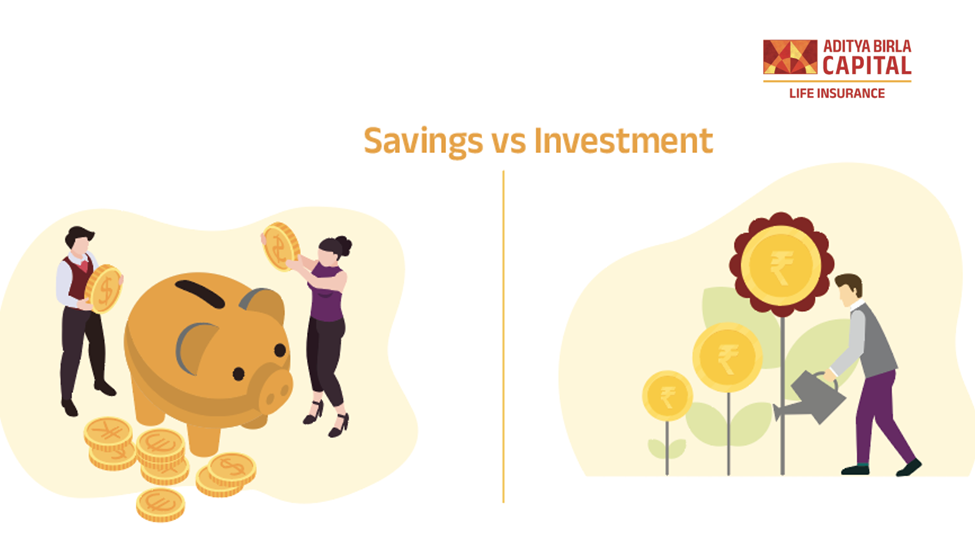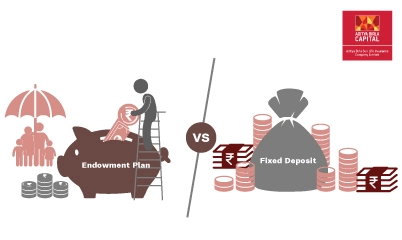Difference Between Savings and Investment Plans
Read Aloud


Get Guaranteed Returns After a Month^
Unlock the Power of Smart Investment!


-
 Table of Contents
Table of Contents
What Are Investment Plans?
What Are Savings Plans?
Difference Between Savings and Investment Plans
How Much Should You Save or Invest?
Conclusion
About Author
Now Playing
from Savings Insurance

What are Monthly Investment Plans and Monthly Savings Plans?
00:00
00:00
Now Playing
What are Monthly Investment Plans and Monthly Savings Plans?
What are Monthly Investment Plans and Monthly Savings Plans?
from Savings Insurance
-
Disclaimer
*Tax benefits are subject to changes in tax laws. Kindly consult your financial advisor for more details.
In the Unit Linked Policy, the investment risk in the investment portfolio is borne by the Policyholder.
Linked Life insurance products are different from traditional life insurance products and are subject to risk factors.
Linked Insurance Products do not offer any liquidity during the first five years of the contract.
The policyholder will not be able to withdraw/surrender the monies invested in Linked Insurance Products completely or partially till the end of the fifth year from inception.
Please know the associated risks and the applicable charges, from your Insurance agent or the Intermediary or policy document. The premium paid in unit-linked life insurance policies are subject to investment risk associated with equity markets and the unit price of the units may go up or down based on the performance of the fund and factors influencing the capital market and the policyholder is responsible for his/her decisions. Tax benefits may be available as per prevailing tax laws.
For more details on risk factors, terms and conditions please read the sales brochure carefully before concluding the sale.
ABSLI Nishchit Aayush Plan. This is a non-linked non-participating individual savings life insurance plan. UIN No 109N137V06
^ - Provided 0 year deferment & monthly income frequency is chosen at the time of inception of the policy.
~ Male- 25 yrs invests in ABSLI Nishchit Aayush Plan with Level Income + Lumpsum Benefit. He chooses premium payment term 10 yrs , policy term 40 years, benefit option -Long Term Income, Sum Assured 7 times of Annualized Premium and Deferment Period 0 years. Annualized Premium is ₹1,20,000 (Exclusive of GST.). Annual Income of ₹45,900 (45,900*40=18,36,000) + Maturity Benefit (₹16,80,000)= ₹35,16,000
ADV/5/24-25/246
Subscribe to our Newsletter
Get the latest product updates, company news, and special offers delivered right to your inbox
Thank you for Subscribing
Stay connected for tips on insurance and investments

 Home Loans
Home Loans
 Personal
Loans
Personal
Loans
 SME Loans
SME Loans
 Business Loans - Udyog
Plus
Business Loans - Udyog
Plus
 Loan against Securities
Loan against Securities
 Mutual Funds
Mutual Funds
 Stock and
Securities
Stock and
Securities
 Portfolio
Management Services
Portfolio
Management Services
 Pension Funds
Pension Funds
 Life
Insurance
Life
Insurance
 Health
Insurance
Health
Insurance
 Wellness
Solutions
Wellness
Solutions
 Pay Bills
Pay Bills
 Pay anyone
Pay anyone
 Pay on call
Pay on call
 Payment
Lounge
Payment
Lounge
 ABC Credit
Cards
ABC Credit
Cards




 1800-270-7000
1800-270-7000








